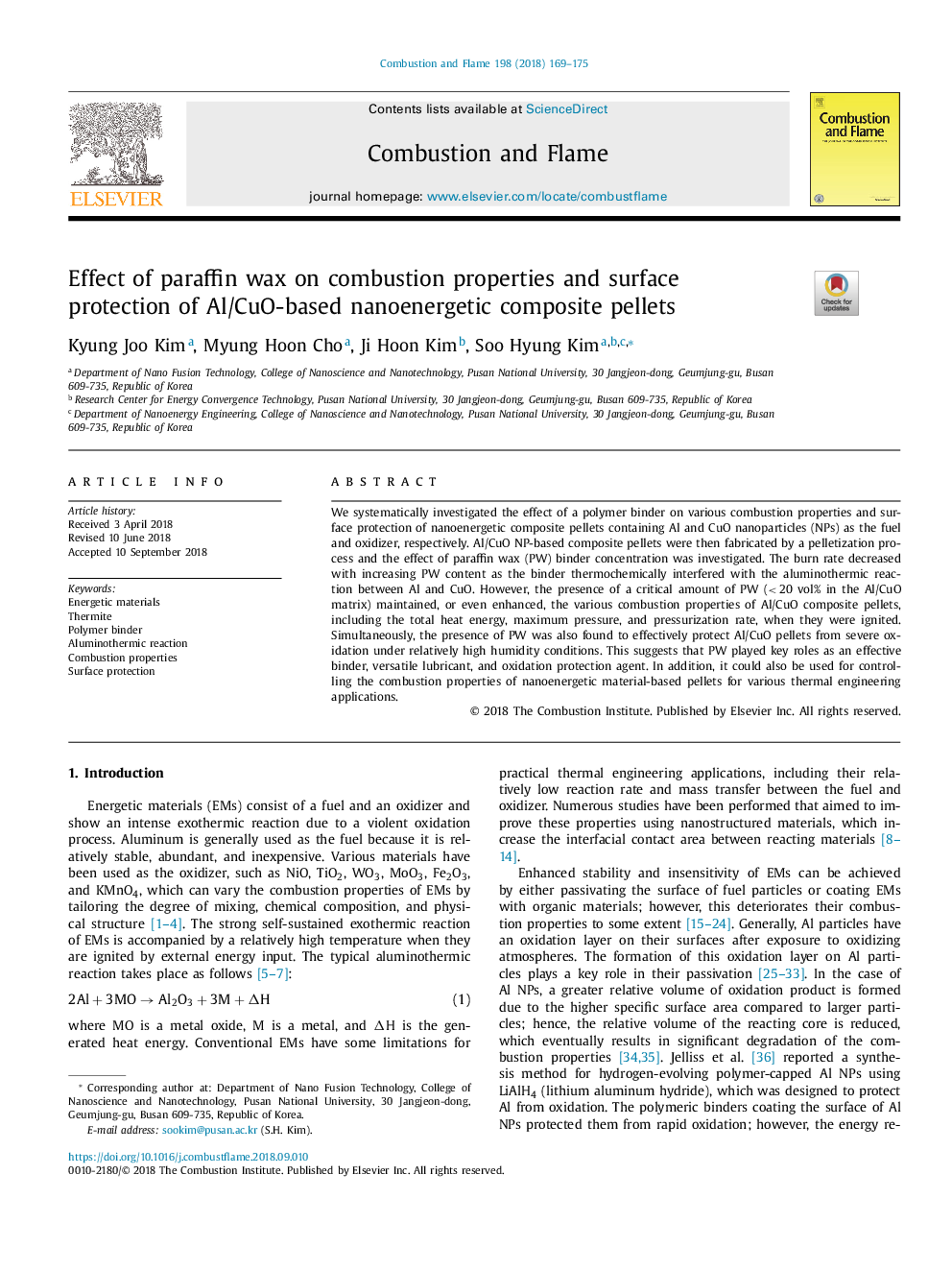| Article ID | Journal | Published Year | Pages | File Type |
|---|---|---|---|---|
| 11024443 | Combustion and Flame | 2018 | 7 Pages |
Abstract
We systematically investigated the effect of a polymer binder on various combustion properties and surface protection of nanoenergetic composite pellets containing Al and CuO nanoparticles (NPs) as the fuel and oxidizer, respectively. Al/CuO NP-based composite pellets were then fabricated by a pelletization process and the effect of paraffin wax (PW) binder concentration was investigated. The burn rate decreased with increasing PW content as the binder thermochemically interfered with the aluminothermic reaction between Al and CuO. However, the presence of a critical amount of PW (<â¯20 vol% in the Al/CuO matrix) maintained, or even enhanced, the various combustion properties of Al/CuO composite pellets, including the total heat energy, maximum pressure, and pressurization rate, when they were ignited. Simultaneously, the presence of PW was also found to effectively protect Al/CuO pellets from severe oxidation under relatively high humidity conditions. This suggests that PW played key roles as an effective binder, versatile lubricant, and oxidation protection agent. In addition, it could also be used for controlling the combustion properties of nanoenergetic material-based pellets for various thermal engineering applications.
Keywords
Related Topics
Physical Sciences and Engineering
Chemical Engineering
Chemical Engineering (General)
Authors
Kyung Joo Kim, Myung Hoon Cho, Ji Hoon Kim, Soo Hyung Kim,
